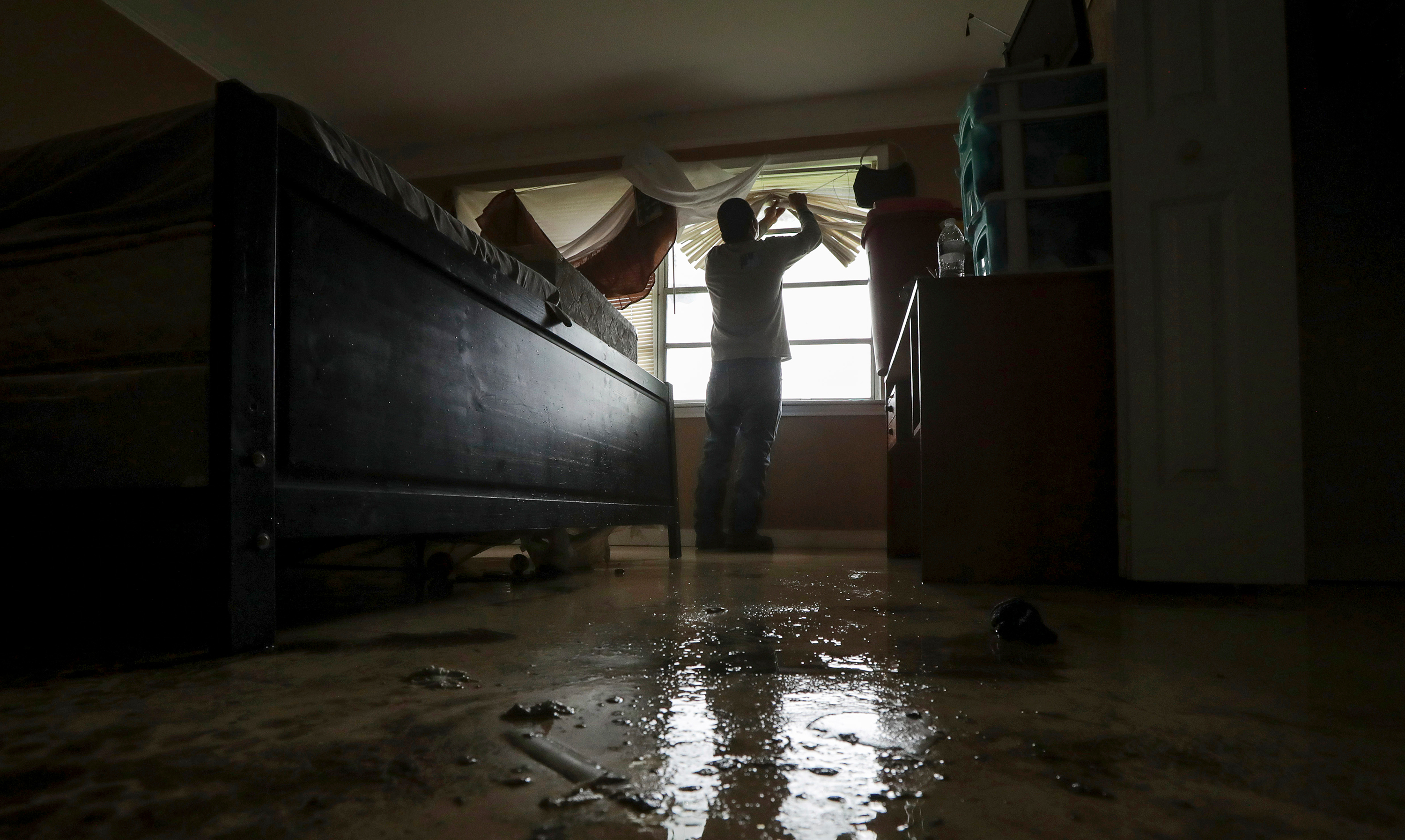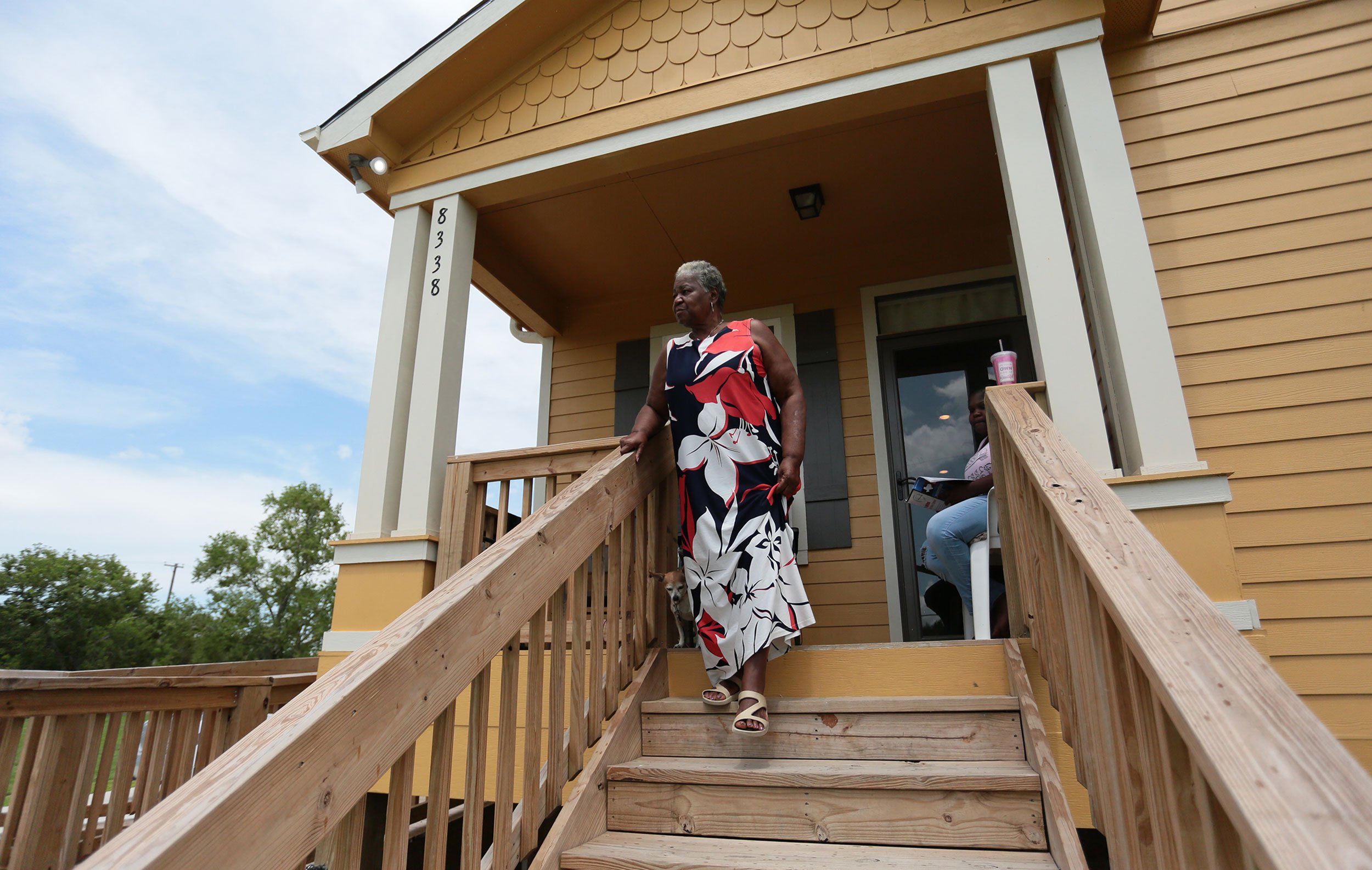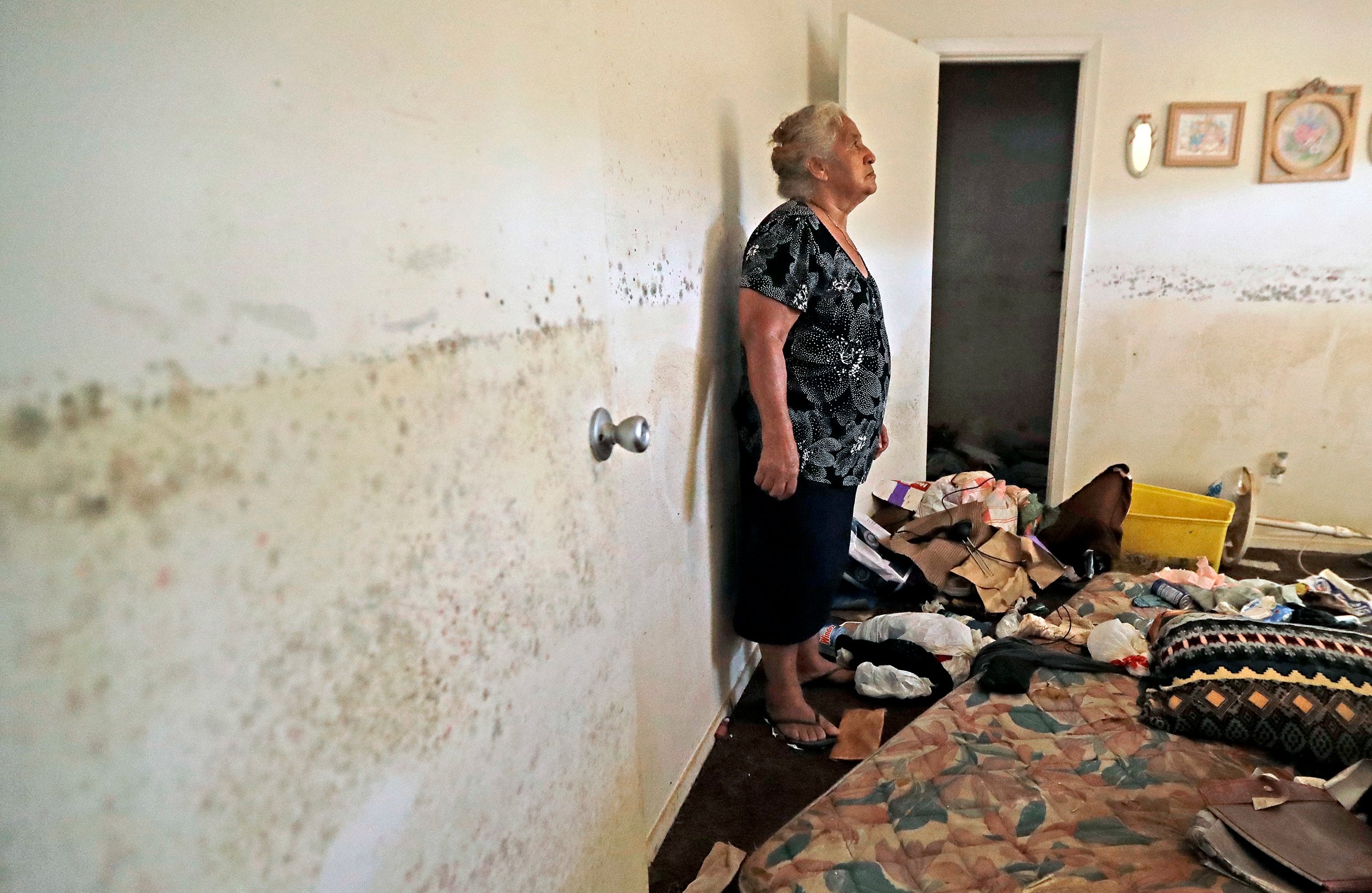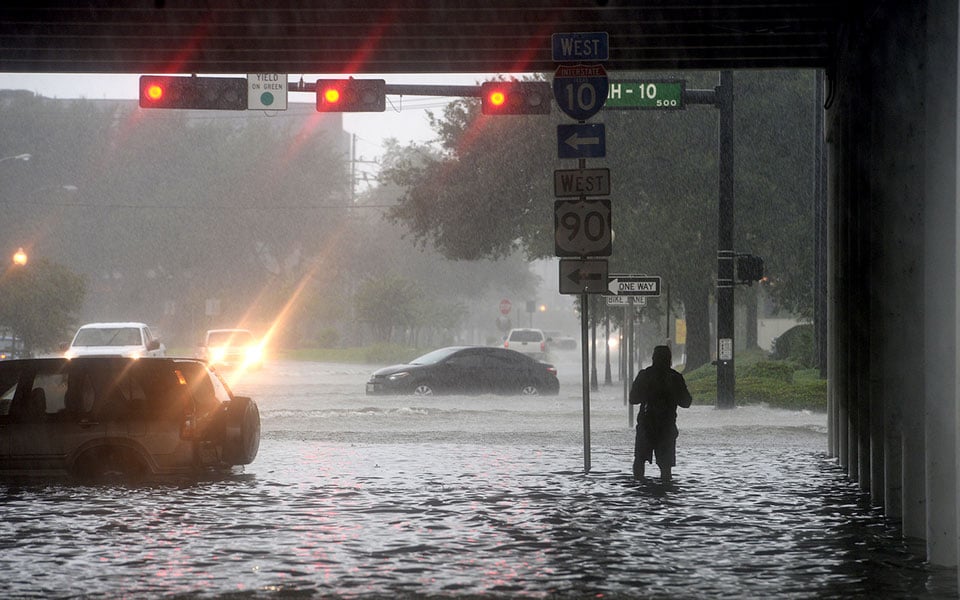
Tropical Storm Imelda Will Likely Be Southeast Texas’ Fifth 500-Year Flood in Five Years
“It’s a sign of the times.”

Above: A man makes his way under the I-10 overpass where several roads remained heavily flooded throughout the afternoon Thursday, September 19, 2019 in Beaumont.
Tropical Storm Imelda hit Southeast Texas this week, causing incredible flooding in much of the region. Some parts of the Houston-Galveston area recorded more than 40 inches of rain, inching toward the records set during Harvey. A flash flood warning was issued from the Texas-Louisiana border, reaching as far west as Fort Bend County. More rain fell in Houston on Thursday than during Hurricane Ike, which hit the region almost exactly 11 years ago.
The tropical storm formed in the Gulf of Mexico on Tuesday and made landfall around 10 p.m. Harris County Flood Control District initially predicted about a foot of rain on Thursday in isolated areas, and the National Weather Service downgraded the storm to a weaker tropical depression. But by Thursday, it was clear that the rainfall was far beyond those initial predictions, particularly in neighboring counties like Jefferson and Chambers, which saw the heaviest rain in the past 72 hours. The governor declared a state of disaster for 13 affected counties that morning.
Tropical Storm Imelda developed and intensified fairly quickly, but was focused on a smaller geographical area than Harvey, says Texas state climatologist John Nielsen-Gammon. Flash floods are hard to predict, since rainfall varies vastly depending on geography, he adds—so evacuations before the storm makes landfall are nearly impossible to plan for.
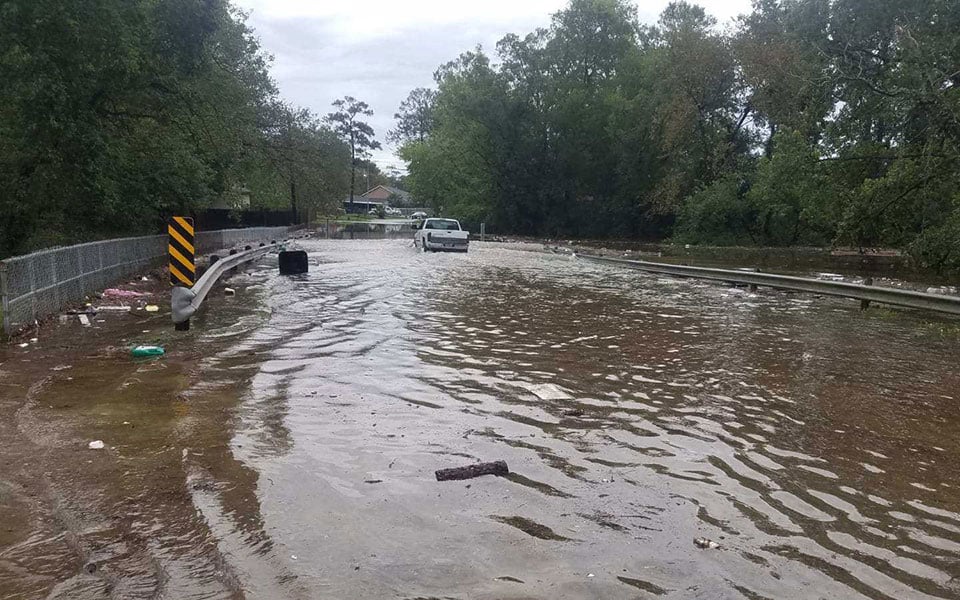
The flooding and damage Imelda has wrought bring back the memories of two years ago: flooded homes, overwhelmed flood infrastructure, the poor and elderly left most vulnerable to the impacts. And the storm formed so quickly that most people weren’t prepared for the full extent of it. By Thursday afternoon, the streets in Lakewood, a residential neighborhood in far Northeast Houston, were flooded and the storm drains overwhelmed, as they almost always are. Ben Hirsch, who works with West Street Recovery to rebuild homes, told the Observer that half a dozen homes already had water in them. In Port Arthur, too, the streets were flooding and residents like Beatrice Sanders, who finally had her home rebuilt after Hurricane Harvey struck two years ago, were nervous that the rising floodwaters would once again render their homes uninhabitable.
Becky Selle, with West Street Recovery, says that many community members she works with felt a sense of mistrust in response to orders to shelter in place and avoid getting on roads to higher ground. The last time similar orders were issued during Harvey, people found themselves trapped in increasingly dangerous situations. Still, as floodwaters rise, getting on roads can be dangerous—one of two reported casualties of the storm drowned in a van submerged in 8 feet of floodwater.
“People can’t afford to rebuild every year,” says Bryan Parras, an organizer with the Sierra Club, as he watched rain pelt the city from his office near Buffalo Bayou. “It’s exhausting and emotionally draining.”
In the two years that have passed since Harvey, Southeast Texas hasn’t become any better prepared for a storm of this size and scale.
Parras is worried about the rains, but also what will remain after the floodwaters recede. When cities like Houston, Beaumont, and Port Arthur flood, dangerous heavy metals from the nearby industrial sites swirl into the waters and are deposited in the soil and sludge after water recedes, he says. On Thursday, the City of Houston issued an emergency warning to residents, urging them to stay out of the water and wash off immediately if they were exposed to it. Later in the evening, the intense rainfall caused 100,000 gallons of wastewater to spill outside of the city.
In the two years that have passed since Harvey, Southeast Texas hasn’t become any better prepared for a storm of this size and scale. Port Arthur residents were stuck in “recovery limbo” since August 2017. A decade after Hurricane Ike, Galveston still hadn’t rebuilt all of the public housing torn down after Ike. Development in floodplains is still rampant, with little regard for how new patches of concrete increase flood risks further downstream. In the meantime, flood control projects take years, if not a full decade, to survey, study, and construct.
Though it might be too soon to tell how climate change shaped the intensity and speed with which Imelda struck Texas, Imelda will likely be Southeast Texas’ fifth 500-year flood event in as many years. But for people like Parras, Selle, and Hirsch, who see the effects of these storms almost every day in their work, there is little room to doubt that the very fossil fuel companies that built this region’s wealth, that pollute its floodwaters, and that refuse to shut down operations in the face of a storm until the last possible moment, are also making storms like Imelda stronger and more frequent.
“It’s a sign of the times,” Parras says. “Something’s gotta change.”
Read more from the Observer:
-
The Green New Deal Can Exist in Texas: The state has already shown what can be accomplished when renewable energy is prioritized. Now, Texans want to take action. Do lawmakers?
-
More Highways, More Problems: Highway expansion is the Lone Star State’s status-quo solution to easing traffic—but it actually leads to more congestion and displaced communities.
-
Climate Change Will Make Harmful Algae Blooms in Texas Waterways More Common: Blue-green algae exists in almost all of the state’s waterways. Once it starts to bloom, it’s hard to get rid of it.
